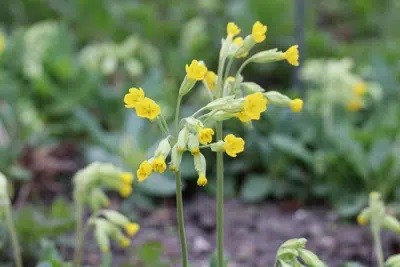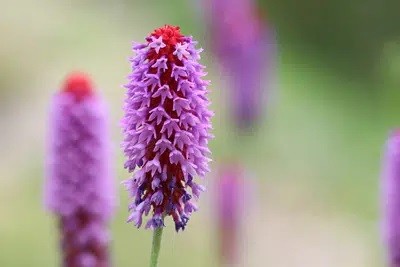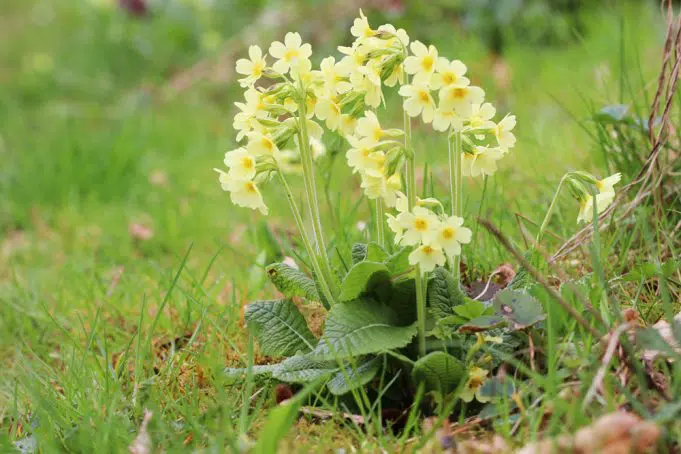Primula, the Latin name of the species-rich genus of primroses, translates as “the first”. Indeed, the colorful primroses bloom together with snowdrops, crocuses and daffodils as the first flowers of the year. The colorful blossoms of some species can be seen as early as the end of winter, when temperatures are still hovering around freezing. However, this does not mean that the delicate spring bloomers are always hardy.
Contents
Winter hardy native Primula species
Worldwide there are about 500 different species of the genus Primula, some of which are native to very different climatic zones and therefore have different winter hardiness. Most primroses originate from the mountains of the earth located in the northern hemisphere and are therefore naturally adapted to adverse living conditions and winter frost. These include, for example, the following varieties:

- Cowslip (P. elatior): also forest cowslip, native species with bright yellow flowers
- Cowslip (P. veris): native species with bright yellow flowers.
- Stemless primrose (P. vulgaris): also called cushion primrose, native species with yellow flowers
- Alpine auricula (P. auricula): native species with bright yellow flowers
- Haller’s primrose (P. halleri): native species with red-purple flowers
- Mealy primrose (P. farinosa): native species with light purple flowers
The listed species are exclusively forms occurring in the wild in Central Europe. These primroses also tolerate extreme frost. They can be safely planted out in the garden and do not require additional winter protection.
Garden primroses
Many of the primroses so abundantly available in stores in the spring are so-called garden primroses, which in turn are hybrids of various (often native) species:
Hybrids of the Stemless Cowslip ( P. vulgaris).
Bastard primroses: also known as bastard auricula, hybrid of auricula (P. auricula) and hairy primrose (P. hirsuta).
Both hybrid forms have been cultivated for several hundred years and have produced countless varieties that are very hardy. These are perfectly adapted to the local climate, as the parent species are native to Central Europe.
Tip: When buying primroses, pay less attention to the Latin species names. While the vernacular names can cause confusion (for example, under “cushion primroses” dealers understand different species such as P. vulgaris as well as the hybrid P. x pruhoniciana), the botanical names provide clarity regarding the needs and winter hardiness of the plants
Other hardy primrose species
In addition to the listed native primroses, there are numerous species and hybrids that have their home in other habitats or even continents – about half of the known Primula species, for example, originate from China. Of these, too, many belong to the hardy to conditionally hardy varieties:
- Floor primrose (P. beesiana)
- Floor primrose (P. japonica)
- Globe primrose (P. denticulata)
- Orchid primrose (P. vialii)
- Rose primrose (P. rosea)
- Carpet primrose (P. juliae
These species can also be put in the garden without hesitation.
Frost sensitive primroses

Absolutely not hardy, on the other hand, is the popular cup primrose (P. obconica), which has its home in the subtropical to tropical regions of China and Thailand and is therefore not naturally accustomed to sub-zero temperatures. During the summer months, you can cultivate the species as a potted plant on the terrace or balcony, but as soon as temperatures drop below ten degrees Celsius, the flowering plant belongs to a warmer location indoors.
Caution: cup primrose is considered highly poisonous and should therefore be kept away from children or pets.
Frost protection during flowering
Even though most primrose species are sufficiently hardy and thus tolerate even deep frosts well, this does not necessarily apply to the flowering period: the delicate flowers quickly freeze back at temperatures below minus five degrees – especially if these occur at night. With a protective cover – for which you can use, for example, newspaper, brushwood or even gardening fleece – you save the blooms from freezing to death.


